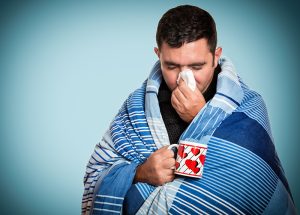Chinese Medicine and Colds, Flu and Allergies
Decidedly different than in Chinese medicine, it’s been long considered that Western medicine knows no cure for the common cold and can only alleviate its symptoms. This approach is valued by patients as it can lend a good measure of relief, causing them to suffer less. The significant shortcoming of this treatment method however is that it does not get to the root of the illness. Rather, it suppresses the body’s natural mechanisms for overcoming illness. Coughing, sneezing and a runny nose, for example, expel illness-causing pathogens while symp

tom management stops this innate process.
Chinese medicine, on the other hand, takes a significantly different approach to treating not only the common cold, but also in treating flu and allergies. All are considered conditions caused by an external pathogen that has not yet been expelled. Chinese herbal medicines facilitate various processes that treat the root of the illnesses and do not suppress the body’s natural healing processes. These include expelling pathogens, building strength, and providing antibiotic or antiviral effects.
While the same pathogen may affect many, each patient’s unique constitution and individualized reactions to a pathogen are considered. In short, one-size does not fit all in Chinese medicine. Diagnostic criteria is much more specific. Some key concepts in treating colds, flu and allergies in Chinese medicine are given below to illustrate the specificity of diagnosis. This is by far not an all-inclusive list. Diagnostic criteria in Chinese medicine’s treatment of colds, flu, and allergies include:
Wind-Cold—feelings of chill, sneezing, runny nose. This is often the first stage of the illness.
Wind-Cold/Wind-Heat—chill, runny nose, phlegm upon waking, sore throat, irritability are some typical symptoms. This is an in-between period in which the illness is moving more internally.
Wind-Heat—sore throat, yellowish phlegm and discharge, fever or feeling hot, irritability.
Shaoyang Syndrome—alternating chills and fever, bitter taste, irritability, nausea.
Lung Heat—fever, cough, severe sore throat, chest discomfort, fewer nasal symptoms.
Other factors determine the treatment prescribed in Chinese medicine. Just a few of these are:
The body’s overall strength or if there is a qi deficiency
Type of cough
Type of phlegm
References
Chen, T. Effectively Treating Allergy and Common Cold/Flu with TCM. eLotus: October 3, 2019.

